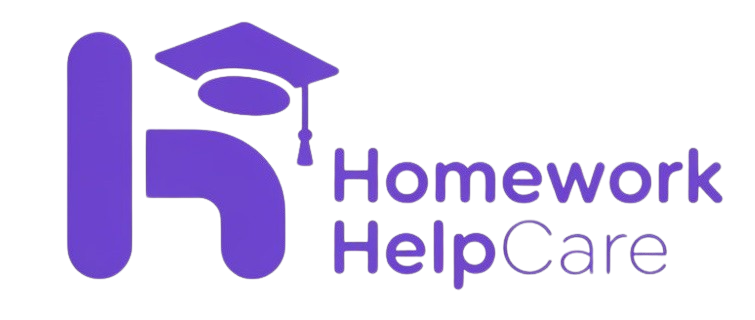Blog
The Best Software for Creating Homework Presentations
Finding the right software for creating homework presentations can be a game-changer for students and professionals alike. Whether you’re preparing for a class project, a college assignment, or a professional training session, the presentation software you choose can significantly impact how effectively you communicate your ideas. With numerous options available—from familiar tools like PowerPoint to newer cloud-based alternatives—selecting the best software for your specific needs requires understanding what features matter most for academic and professional presentations.
What Makes Great Presentation Software for Homework?
When evaluating presentation software for academic purposes, several key factors should influence your decision:
Ease of Use vs. Advanced Features
The ideal presentation software balances user-friendliness with powerful capabilities. For beginners or quick projects, simpler interfaces may be preferable, while complex presentations might benefit from more advanced design tools.
Template Availability
Good presentation software typically offers a variety of professionally designed templates that can be customized to fit academic requirements. This saves valuable time when preparing homework assignments under tight deadlines.
Collaboration Capabilities
Many modern education settings emphasize group work, making real-time collaboration features essential for students working on team presentations.
Cost Considerations
Budget constraints are real for most students. While some premium options offer educational discounts, many excellent free presentation tools provide robust functionality without any cost.
Top Presentation Software Options for Students
Microsoft PowerPoint
PowerPoint remains the industry standard for presentation software, with good reason. Its familiar interface and comprehensive feature set make it suitable for nearly any academic presentation need.
Key Benefits:
- Extensive template library specifically designed for educational presentations
- Deep integration with other Microsoft Office products
- Powerful animation and transition capabilities
- Available on multiple platforms (Windows, Mac, mobile, web)
Potential Drawbacks:
- Requires purchase or Microsoft 365 subscription (though many educational institutions provide access)
- Can be overwhelming for beginners due to numerous features
Microsoft PowerPoint offers robust design capabilities while maintaining accessibility for users of all skill levels. Its ubiquity in academic and professional environments means your presentations will be compatible virtually anywhere.
Google Slides
Google’s cloud-based presentation software has gained tremendous popularity in educational settings due to its excellent collaboration features and accessibility.
Key Benefits:
- Free with a Google account
- Real-time collaboration capabilities ideal for group projects
- Automatic cloud saving prevents work loss
- Accessible from any device with internet access
Potential Drawbacks:
- More limited design capabilities compared to PowerPoint
- Requires internet connection for optimal functionality
Google Slides excels in collaborative environments and situations where working across multiple devices is necessary. Its simplicity makes it particularly appealing for K-12 and undergraduate students.
Canva
While not traditionally considered a presentation tool, Canva has evolved into an excellent option for creating visually striking homework presentations.
Key Benefits:
- Intuitive drag-and-drop interface
- Thousands of free templates designed specifically for educational presentations
- Extensive library of free images, icons, and graphic elements
- Basic free tier with generous capabilities
Potential Drawbacks:
- Less powerful for data-heavy presentations
- Limited animation capabilities compared to dedicated presentation software
Canva stands out for visually-oriented presentations where design aesthetics are particularly important. Its templates often feel more modern than those available in traditional presentation software.
Specialized Presentation Tools for Academic Use
Prezi
Prezi revolutionized the presentation landscape with its zooming user interface and non-linear approach to slideshows.
Key Benefits:
- Unique visual style that can engage audiences more effectively
- Ability to create presentations that show relationships between concepts
- Cloud-based collaboration features
- Templates specifically designed for educational presentations
Potential Drawbacks:
- Learning curve steeper than traditional slide-based software
- Motion effects can be distracting if overused
- Limited free tier
Prezi works particularly well for presentations that benefit from showing connections between ideas or concepts, making it excellent for subjects like history, literature, or science.
Keynote
Apple’s presentation software offers elegant design capabilities with an emphasis on visual appeal and ease of use.
Key Benefits:
- Elegant, modern templates
- Intuitive, clean interface
- Powerful but easy-to-use animation tools
- Seamless integration with other Apple products
Potential Drawbacks:
- Limited to Apple ecosystem (though web version available)
- Less common in business environments
Keynote is an excellent choice for Mac users who prioritize design aesthetics and ease of use in their homework presentations.
Comparing Key Features in Presentation Software
| Software | Cost for Students | Collaboration | Template Quality | Mobile Support | Offline Access |
|---|---|---|---|---|---|
| PowerPoint | Free with many school accounts; otherwise subscription | Real-time with 365 subscription | Extensive, professional | Full-featured apps | Yes |
| Google Slides | Free | Excellent real-time | Good, growing library | Good app support | Limited |
| Canva | Free tier with educational features | Basic real-time | Excellent, modern | Good app support | No |
| Prezi | Limited free tier | Basic real-time | Modern, unique | Viewer apps | Limited |
| Keynote | Free with Apple devices | Through iCloud | Excellent, elegant | iOS only | Yes |
Advanced Presentation Techniques for Better Homework Grades
Regardless of which software you choose, implementing these techniques can elevate your homework presentations:
Visual Consistency
Maintain consistent design elements throughout your presentation. This includes colors, fonts, spacing, and image styles. Most quality presentation software offers master slide features to help ensure consistency.
Data Visualization
When presenting research findings or statistics in academic contexts, use appropriate charts and graphs rather than tables of numbers. PowerPoint and Google Slides offer built-in data visualization tools, while Canva provides attractive templates for displaying data.
Engagement Through Multimedia
Incorporate relevant videos, audio clips, and interactive elements when appropriate for your subject matter. However, ensure these enhance rather than distract from your academic content.
The 6×6 Rule
A useful guideline for academic presentations is the 6×6 rule: no more than six words per line and six lines per slide. This prevents information overload and keeps your audience engaged with your key points.
Making Presentations Accessible
Creating accessible presentations is not only inclusive but often required in educational settings:
- Use sufficient color contrast between text and backgrounds
- Include alt text for images and graphics
- Structure content with proper headings and reading order
- Consider providing transcript or notes for those who may need them
Most modern presentation software includes accessibility checkers to help ensure your homework presentations can be accessed by all students and instructors.
FAQs About Presentation Software for Homework
Google Slides is generally considered the most straightforward option for beginners. Its clean interface focuses on essential features without overwhelming users with options. Canva is another excellent choice for those who prioritize design but don’t need complex functionality.
Yes, all major presentation software now offers mobile apps or responsive web versions. PowerPoint, Google Slides, and Canva have particularly robust mobile experiences, allowing you to create or edit presentations on the go.
Focus on clear communication of your ideas rather than flashy effects. Use high-quality images, consistent design elements, and concise text. Consider using techniques like storytelling and thoughtful organization of information to engage your audience.
Absolutely. Google Slides and the free tier of Canva offer sufficient capabilities for most college presentations. Many educational institutions also provide PowerPoint access to students at no cost.
Consider your specific needs: If collaboration is important, Google Slides excels. If advanced design features matter most, PowerPoint or Keynote might be better choices. For visually-oriented presentations with minimal learning curve, Canva often works best.


